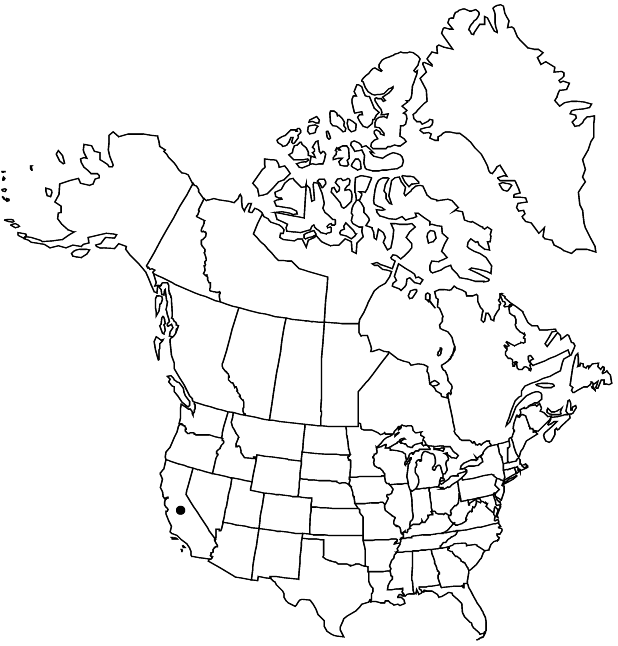Dudleya lanceolata
New N. Amer. Crassul., 23. 1903 ,.
Caudices simple or apically branched and cespitose, 1–5 × 1–3 cm, axillary branches absent. Leaves: rosettes 1–7, not in clumps, 10–25(–30)-leaved, 3–25 cm diam.; blade green, oblong-lanceolate, 4–30 × 0.5–4 cm, 1.5–6 mm thick, base 1–3 cm wide, apex acute to acuminate, surfaces not farinose, sometimes glaucous. Inflorescences: cyme mostly 2–3-branched, obpyramidal; branches not twisted (flowers on topside), simple or 1-times bifurcate, (5–16 cm diam.); cincinni 2–3, 2–20-flowered, circinate, 2–15(–25) cm; floral shoots 15–90(–120) × 0.3–1.2 cm; leaves 18–40, spreading to ascending, triangular-lanceolate to -ovate, 10–30(–50) × 3–18 mm, apex acute, in age straight and erect to spreading. Pedicels erect, not bent in fruit, 2–6(–12) mm. Flowers: calyx 4–7 × 5–8 mm; petals connate 1–2 mm, bright yellow or usually red or red-flushed or -marked abaxially, greenish to orange-yellow adaxially, 10–16 × 2.5–5 mm, apex acute, tips slightly outcurved; pistils connivent, erect. Unripe follicles erect. 2n = 68.
Phenology: Flowering spring.
Habitat: Rocky slopes
Elevation: 0-1300 m
Distribution

Calif., Mexico (Baja California).
Discussion
Dudleya lanceolata is wide-ranging, from Monterey and western Kern counties southward through San Diego County, variable, and ill-defined. It varies locally in size of parts and in flower color but does not seem easily divisible into smaller units. N. L. Britton and J. N. Rose (1903, 1905) proposed seven additional species of southern California or of unstated origin that seem best included here. On the basis of 18 or more well-scattered collections, it is tetraploid; it seems best defined partly on that basis. Similar plants from Aliso Canyon, Orange County, are octoploid (C. H. Uhl and R. V. Moran 1953, as D. sp. aff. D. lanceolata); this is one of several scattered coastal populations with the caudex elongate. Another is D. elongata Rose, from near San Pedro, of which later collections are tetraploid.
Selected References
None.